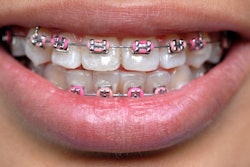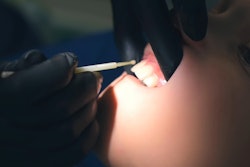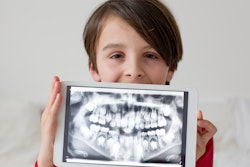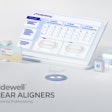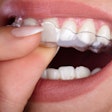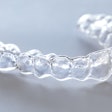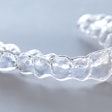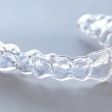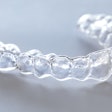
Adolescent patients undergoing clear aligner treatment often experience a high occurrence of white spot lesions (WSLs), according to research recently published in Orthodontics and Craniofacial Research.
Many factors contribute to white lesions, including infrequent brushing, inadequate cleaning of aligners after eating, and more, the authors wrote.
"In the population studied, 35.5% of patients developed at least one WSL during treatment," wrote the authors, led by Qian Liu of the State Key Laboratory of Oral & Maxillofacial Reconstruction and Regeneration in China (Orthod Craniofac Res, April 17, 2024).
The extended wear duration and extensive coverage of tooth surfaces by clear aligners can impede natural cleaning by saliva, potentially leading to enamel demineralization. As clear aligners become more popular in adolescent orthodontic treatment, clinicians have observed numerous instances of WSLs following their use, they wrote.
Researchers evaluated pretreatment and post-treatment photos of 203 adolescent patients ages 10 to 19 years old who underwent clear aligner therapy to understand the occurrence and severity of WSLs. They gathered data on patients' oral health and treatment details from medical records, questionnaires, and ClinCheck software.
Through statistical analysis, it showed that 35% of adolescents developed WSLs during treatment. Key risk factors for WSLs included preexisting WSLs (odds ratio [OR]: 2.484), frequent consumption of carbonated beverages (OR: 1.508), and having more anterior attachments (OR: 2.192), while brushing more frequently (OR: 0.656) and cleaning aligners after eating (OR: 0.611) were protective against WSLs.
The study, however, had limitations. The regression analysis indicated that the duration of treatment did not contribute significantly to the development of WSLs. In the future, research should consider prospective cohort studies to better understand the progression and occurrence of WSLs during treatment, they added.
"In summary, orthodontists should provide adequate oral hygiene guidance and dietary advice to adolescent patients before clear aligner treatment, including strictly requiring them to brush their teeth at least three times a day, to clean the aligners in a timely manner after eating while wearing them," they concluded.




